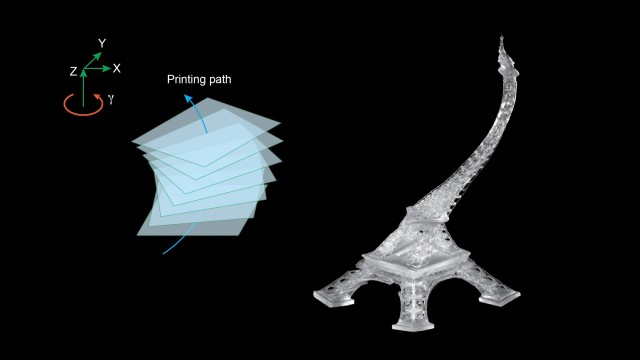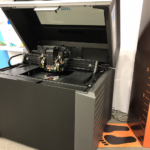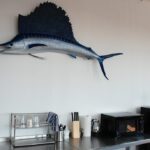

A research team at Northwestern University has used light and a robotic arm to develop a new 3D printing process which lets them move, turn, and resize model layers during printing. The team hopes that their new printing process will give designers more freedom to print complicated shapes and print in multiple materials.
In most traditional 3D printing applications, the printing software slices the digital model into layers and then “places” them on top of each other in the physical world. Printing this way provides a lot of freedom in the z-axis, but not much freedom to change axes, or to change the model part way through printing. However, in a study published recently in Additive Manufacturing, a team led by mechanical engineering researcher Cheng Sun developed a process that allowed them to print on different axes and change the layers while printing.
“The 3D printing process is no longer a way to merely make a replica of the designed model,” Sun said. “Now we have a dynamic process that uses light to assemble all the layers but with a high degree of freedom to move each layer along the way.”
To achieve this, Sun’s team used a photopolymer resin and a complex robotic arm. A photopolymer is a polymer whose properties change when exposed to light (probably most popularly-known outside of 3D printing for their use in UV-cured fillings at the dentist’s office). In this case, shining light on the polymer makes it crosslink, turning it into a solid. Sun’s team used a DLP-based printer with a liquid resin vat, using projected light to “freeze” the resin as it came out of the vat.

The structures were “pulled” out of the vat by a six-axis robotic arm, capable of easy swiveling motion because of its sixth axis, a robotic “wrist”. The greater degree of freedom means the printing process isn’t just locked into building on the z-axis, and the designer can decide to change the printing direction or transform the layer while they’re printing.
This process gives designers more freedom over each layer, letting them print from multiple materials and on multiple axes. The prototype objects the team built showed off the process’s strengths. A customized vascular stent based off of a patient’s MRI readings showed off the process’s flexibility. A working pneumatic gripper, with “gripping tips” made of soft materials on a base made of harder polymers, showed off the potential for multimaterial printing. And their DNA helix model and shear-and-twist model of the Eiffel Tower showed off the potential to change layers in a visually-obvious way.
Sun’s research team is also excited about the speed of their process. As the layers harden immediately and the process is continuous (meaning no “steps” between layers), they’re capable of printing 4,000 layers in about two minutes.
“This is a very fast process, and there is no interruption between layers,” Sun said. “We hope the manufacturing industry will find benefit in it.”
If you're looking to get architectural 3D animation in the USA, our service provides an exceptional way to bring your architectural concepts to life through dynamic, immersive visuals. Through our platform, you can easily request high-quality 3D animations that showcase your designs in motion, offering a detailed view of your project from multiple angles and perspectives. Whether it's for a real estate development, a commercial building, or an urban planning project, our expert team ensures that every detail is captured in a visually compelling animation.
Through our website, you can seamlessly get architectural 3D animation tailored to your project’s specific needs. With our help, you can offer potential clients or investors an engaging experience that goes beyond static images. By integrating CGI animations with real-world settings, lighting, and textures, our team creates a lifelike experience that allows your audience to interact with your project as though it were already built. This service is perfect for presenting complex designs in a clear, visually attractive way that stands out in the competitive architectural market.




